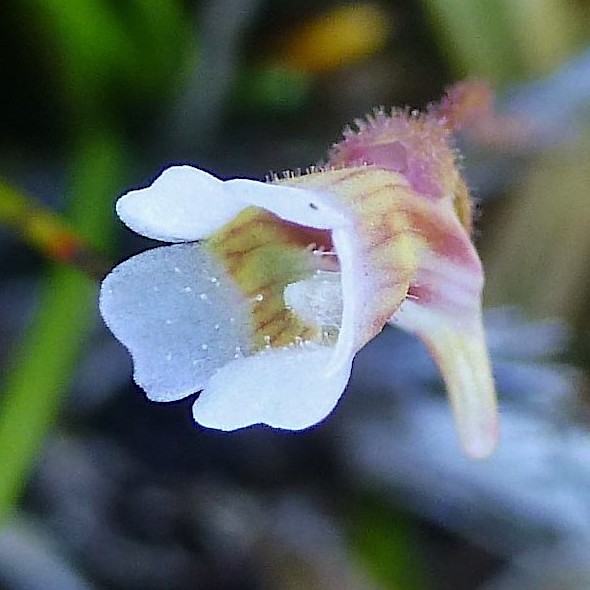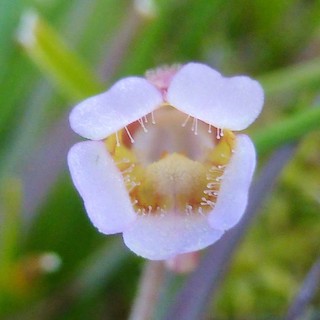
A paler, smaller version of Common Butterwort, the Pale Butterwort is harder to find, but worth the search. Crousa Downs is a good place to look.
Photo: Kate Dalziel
Scientific name: Pinguicula lusitanica
What to look for:
• Family: Lentibulariaceae (Butterwort family)
• Flowers: Pale pink/lilac; funnel-shaped; yellow, red-veined throat. Three-lobed upper and two-lobed lower lip.
• Leaves and stem: Rosette (up to 5 cm across) of thin, olive-coloured, purple-veined, pointed leaves with curled edges, covered in hairs. The stem is long and slender.
• Height: 3 to 10 cm
• Where: Wet, boggy habitats; acidic heaths.
• When: Flowers from June to October.
• Habit: Upright.
• Similar to: Compare with Common Butterwort

The delicate single flower of a Pale Butterwort appears in the summer. Meanwhile, at ground level, the leaves are working hard to feed this insectivorous plant. Unwary insects become stuck to the sticky leaves, which then curl inwards, rolling from the edges to trap the prey and digest it at their leisure.
Mainly found in the west of Britain, including Cornwall, the perennial Pale Butterwort is scarcer than its genus sibling, the Common Butterwort (P. vulgaris). Both species are in decline due to loss of suitable habitat. Look for it on bare, peaty and stock- or deer-poached soils, or beside grass tussocks.
Did you know…?
…The leaves of both Pale and Common Butterwort were once used to curdle milk (hence the name Butterwort).
More information and references:
Rose, F. and O’Reilly, C., 2006. The Wild Flower Key, 2nd edition. Frederick Warne, London.

Published: July 2020
Author: Amanda Scott
Photos: Kate Dalziel
